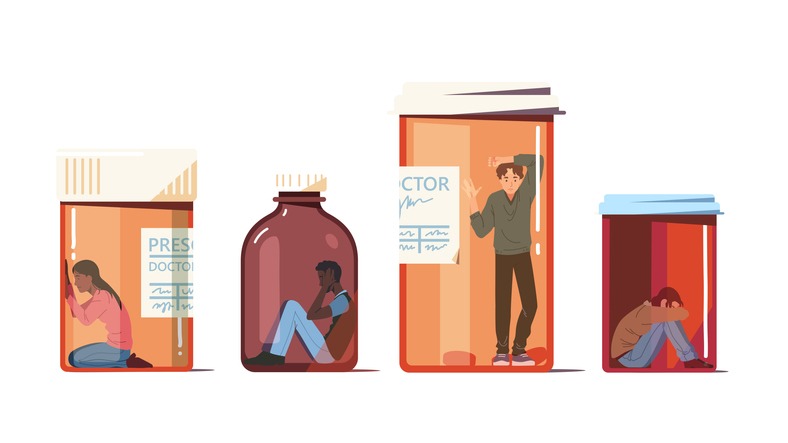
Prescription drug dependence is always going to cause you a fair few grey hairs, particularly if you manage a patient list – here’s how to make it easier
CREDIT: This is an edited version of an article that originally appeared on NB Medical Education
According to a 2019 Public Health England report, a staggering one in four people in England take prescription medicines with the potential for dependence and withdrawal. Long-term prescribing is also widespread, despite these drugs only being licensed and indicated for short-term treatment of acute conditions. These high levels of historical prescribing can be a daunting challenge to address in under-pressure primary care.
The 2022 NICE Guideline ‘Medicines associated with dependence or withdrawal symptoms’ provides some helpful pointers, but also has significant implications for us as prescribers. It’s clear we must be explicit with patients about the risk of dependency before prescribing, and patients already taking these drugs should be offered a supported withdrawal.
But how do we give that supported withdrawal the best chance of success? ‘The Five E’s’, proposed in helpful Guidance from the Oxford Pain Management Centre, provide some practical steps.
- Education – does the patient understand why reduction is important? It’s helpful to identify what side effects are the most relevant to your patient and use this to try and engage them.
- Engagement – try to give the patient as much choice as possible so they feel in control and take ownership of the process, making them more likely to succeed. Remember, it doesn’t really matter how the drugs are reduced so long as it happens, so let the patient decide the details.
- Effect the weaning plan – a robust, clear, negotiated plan is essential. Weaning templates can be helpful, and make sure liquids are changed to tablets so swigging from the bottle is not an option.
- Emotional Impact – anxiety is expected during withdrawal and can exacerbate withdrawal symptoms, so provide plenty of reassurance that the withdrawal plan is safe. If necessary, reduce the size of the dose reduction or prolong the time between dose reductions to keep the patient on board.
- Expectations – ensure the patient understands this won’t be easy. Whether it is a short-term worsening in their pain, withdrawal symptoms or increased anxiety and depression, it can take four to six months before they feel back to normal. Support from friends, family and a lead clinician undertaking regular planned reviews is helpful, and they should also try to develop non-drug techniques.
And if the five E’s fail and you don’t succeed first time? Don’t panic – life happens. Aim to stop any further escalation in the patient’s dose, plan to attempt another reduction at a later date and clearly record the advice you’ve given.


Be the first to comment